Identification through the seasons
The information below gives a brief explanation of how the appearance of Japanese Knotweed changes throughout the year – it can be most difficult to identify and therefore easily missed during the winter months.
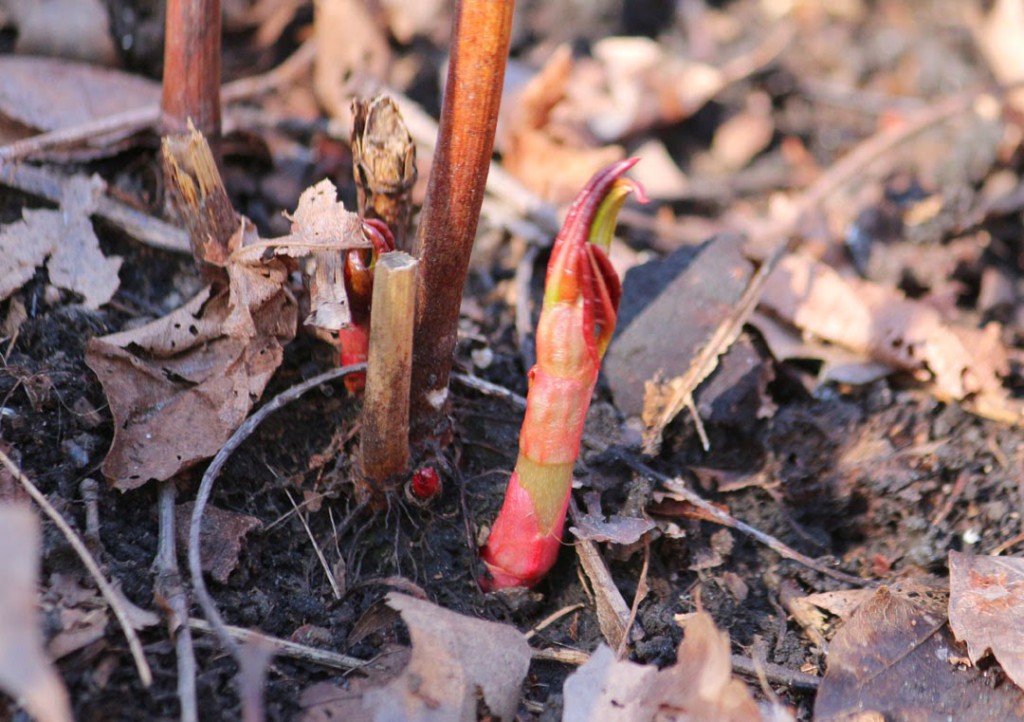
Knotweed in Spring
From March to April, small red/purple shoots (like asparagus) emerge from the ground. As time passes, the leaves begin to open and they can be red, or green with red veins.
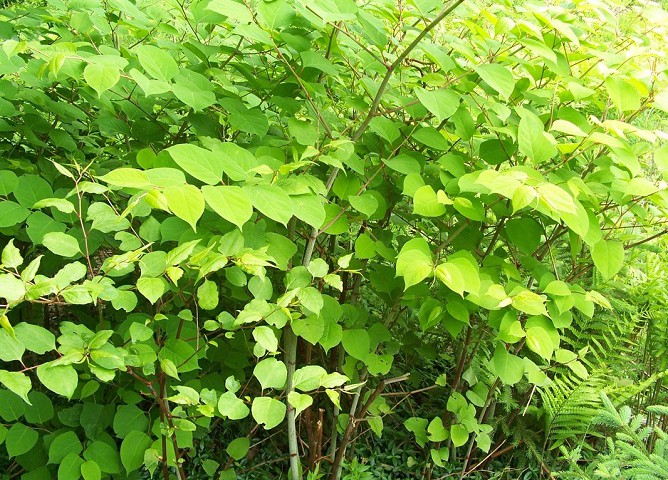
Knotweed in Summer
This is when the plant grows the fastest, easily achieving 10cm per day. The bamboo-like green and purple speckled hollow stems grow in tightly formed stands and the shield-shaped leaf will grow from zig-zag stems.
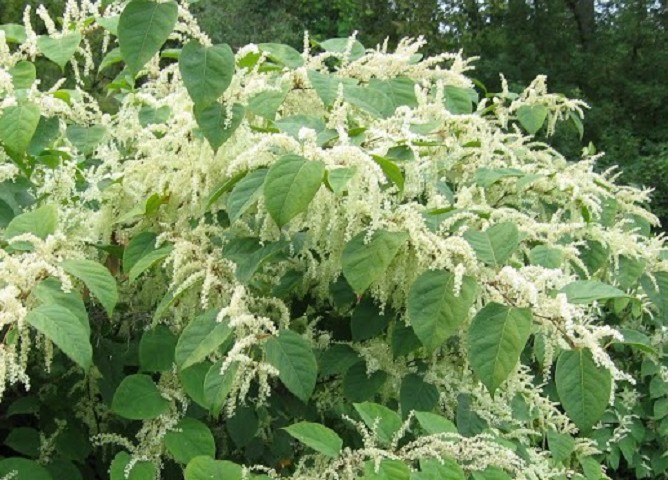
Knotweed in Autumn
From September to October, the plant begins to flower. Small creamy white flowers, growing on 10cm long stalks, hang down in clusters. Although the plant produces seeds, these are only female plants. This means the plant does not spread through the seeds. Bees will enjoy the plant, but they won’t pollinate the plants that need them.
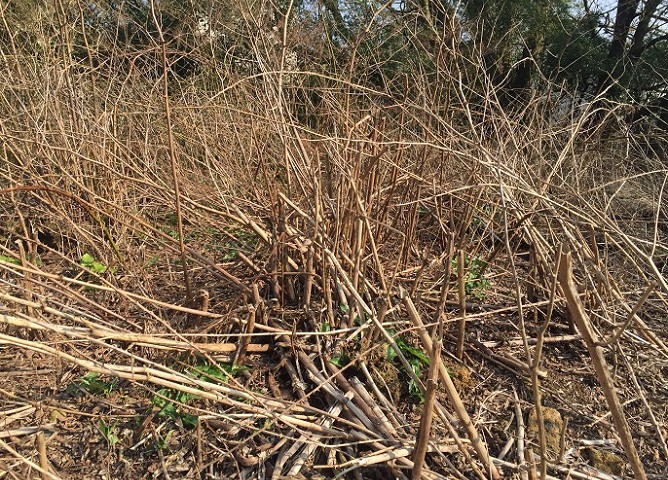
Knotweed in Winter
This is when Knotweed can hard to identify. The leaves will turn yellow, the plant will appear to die back – but don’t be fooled. It will be alive from beneath the ground. The leaves fall, the stems turn brown – becoming dry and brittle – but dead stems can take up to 3 years to break down.
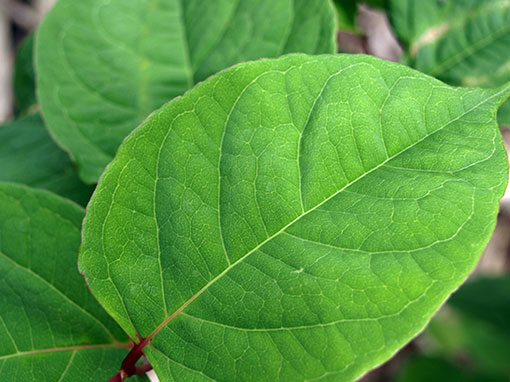
What is Japanese Knotweed?
Japanese Knotweed (Fallopia Japonica) is one of the most invasive non-native species in Britain. It’s a large clump-forming plant that grows to almost 3m in height.
Native to Japan, it was introduced in Britain during the nineteenth century as an ornamental garden plant. Just before the turn of the century, it became known as a harmful species, starting to spread in the wild.
How can I identify Japanese Knotweed?
The canes are easily identifiable. Whilst they look a lot like bamboo, they have distinctive purple flecks along the green stem.
The branches and leaves grow in a zig-zag pattern from nodes along the canes. In the winter, the canes die back and become dry, brittle, and hollow.
It can take up to three years for the winter canes to break down naturally.

Why is Japanese Knotweed a problem?
It is an incredibly fast growing and strong plant
It can grow 10cm within a day and get to its full height of almost 3m within 10 weeks. The speed of its growth and the dense leaf canopy area makes it difficult for other plants to grow. Rapidly, you will find that there is only bare earth beneath the Knotweed plant.
The bare earth is a problem on watercourses. During floods or high tides, the riverbank erodes away, taking fragments of the plant with it. This risks the spread of Knotweed further downstream.
Although the plant appears to die back in winter, it continues to grow underground
This is due to a continuously growing stem (a rhizome) that sends roots and shoots from its nodes. This makes a dense crown from which the canes grow. Studies have shown that these stems can spread up to 7m away from the parent crown and to a depth of 4m. The rhizome becomes dormant at winter, but they regrow as the weather gets warmer.
Despite a slower spread, the rhizome can extend in any direction and follows the path of least resistance. This may cause problems for homeowners and it can have a destructive effect on building foundations and drains.
Knotweed can rejuvenate from very small pieces of plant material
Although most Knotweed found in Britain is because of rhizome of crown material, a fingernail-size piece of rhizome weighing 0.7g can regenerate into a new knotweed plant.
To avoid the accidental spread of the species, clean the grips in your shoes and your tools if you’ve been near Knotweed.
Japanese Knotweed has an incredibly sweet tasting nectar, which attracts bees
This stops the bees from pollinating native plants and flowers. Here at Knotweed Support, we love the bees. Where possible, we avoid treating during the main flowering period so the bees can fill their hives ready for the winter.
Japanese Knotweed may cause structural damage
Japanese Knotweed has been known to grow through pathways, patios, and foundations affecting the integrity of your property structures. As a result, Japanese Knotweed may be a problem if you’re selling your property – but don’t worry.
We can solve this problem. Find out more here.
Get in touch and we can help
We’ll help you to identify, tackle and eliminate the invasive species that you have found on your property.
